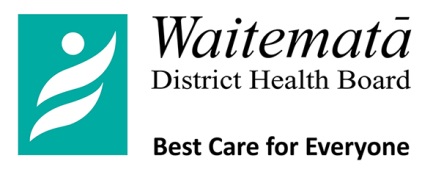 Hospital Services
Hospital Services
North Shore Hospital Campus
Shakespeare Road, Takapuna
Private Bag 93-503, Takapuna
Auckland 0740
Telephone: 09 489 0527
2 February 2022
Mr Andrew McGregor
Via email: [FYI request #17708 email]
Dear Andrew
Re: OIA request – Guidelines and procedures for investigation of medical conditions
Thank you for your three Official Information Act requests which were transferred to us by the
Ministry of Health on 22 December 2021, seeking information from Waitematā District Health Board
(DHB) about guidelines and procedures for investigating specific medical conditions.
Before responding to your specific questions, it may be useful to provide some context about our
services.
Waitematā is the largest and one of the most rapidly growing DHBs in the country, serving a
population of around 650,000 across the North Shore, Waitakere and Rodney areas. We are the
largest employer in the district, employing around 8,600 people across more than 80 locations.
In addition to providing care to our own resident population, we are the Northern Region provider of
forensic mental health services and child rehabilitation services, plus the metro Auckland provider of
child community dental services and community alcohol and drug services.
In response to your requests, we are able to provide the following information:
1. Guidelines/procedure for investigating possible colonic motility dysfunction/defecatory
disorders/anorectal dysfunction
Our gastroenterology service receives outpatient and inpatient referrals for the more complex
colonic motility and anorectal dysfunction cases, as does the colorectal service. There are
international guidelines (known as Rome IV) that our trainees and specialists follow to work out
what procedures and investigations to do for motility dysfunction, defecating disorders and
anorectal dysfunction.
History, exam findings, obstetric/occupational background, medications and many other factors all
influence management of patients. Basic blood tests, abdominal x-rays and sometimes
colonoscopies are also ordered. As it a subspecialty area, we may request more advanced tests -
including colonic transit studies, defecating proctogram and 3-D anorectal manometry testing.
Complex patients are discussed at the weekly multi-disciplinary team (MDT) meetings led by the
colorectal service with multi-disciplinary input, including pelvic health physiotherapy.
2. What are the official guidelines/procedures for urgent x-rays (24-hour)?
Inpatient requests are automatical y accepted and performed within the required timeframe – this is
usually within the first two hours, where urgent, or otherwise within six hours.
1

Outpatients are not typically seen within 24-hours. The most common request for urgent imaging is
from general practioners (GPs) with regards to urgent chest x-rays, pneumonia or heart failure.
These are typically a “walk-in service”. However, throughout the COVID-19 pandemic (since the first
lockdown in March 2020) we have instructed GPs, via their digital and text-based messaging system
(Medinz), to contact the radiology co-ordinator at each hospital site to notify that a chest x-ray is
needed. GPs are required to complete COVID-19-related screening questions and, if the patient is
symptomatic (which is typical with a chest x-ray), we ask that a COVID-19 test be performed by the
GP prior to the patient coming in to the department.
Outpatient x-ray imaging is also triaged by our specialist medical imaging technologists (MITs), with
specialist input from the lead radiologist, if required. We rarely decline outpatient requests for
imaging. Many GPs use imaging guidelines based on criteria published on the Auckland region’s
community HealthPathways website, an on-line resource for health professionals. GPs typically
request imaging for within two weeks, where there is a higher level of urgency or otherwise within
six weeks.
3. What are the guidelines/procedures for patients repeatedly admitted to an emergency
department with severe epigastric pain/and upper right and left quadrant pain
Any patient who repeatedly presents to one of our hospitals’ emergency departments (North Shore
or Waitakere) for assessment is generally reviewed by a senior clinician. A patient presenting with
abdominal pain will have an initial assessment, examination and workup to determine if they require
admission and inpatient care. Their pain is managed with appropriate, and sometimes targeted,
analgesia (e.g. Omeprazole for pain from a stomach ulcer). If they do not require admission they will
be discharged and advised to follow-up with their GP if symptoms persist.
The initial workup may include baseline bloods, including lipase and inflammatory markers and
urinalysis. If there is concern regarding a perforation or obstruction, an x-ray may be requested. If
there is concern for gallstones or cholecysitis, an ultrasound may be requested. Sometimes a CT is
indicated. There are many patients with abdominal pain where a specific diagnosis is not made in
the emergency department – diagnosis may be made through outpatient testing, via the patient’s
GP, if pain is recurring. It may take place through inpatient testing if the patient requires admission.
I trust that this information is helpful.
Waitematā DHB supports the open disclosure of information to assist community understanding of
how we are delivering publicly funded healthcare. This includes the proactive publication of
anonymised Official Information Act responses on our website from 10 working days after they have
been released.
If you consider there are good reasons why this response should not be made publicly available, we
wil be happy to consider your views.
Yours sincerely
Mark Shepherd
Executive Director Hospital Services
Waitematā District Health Board
2

